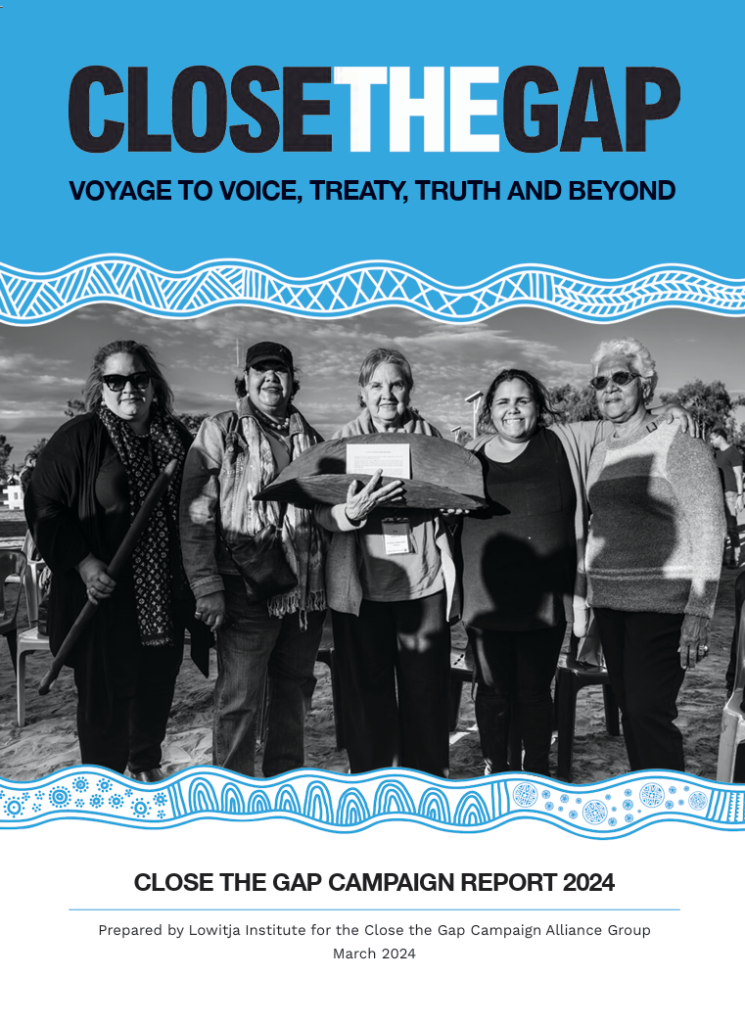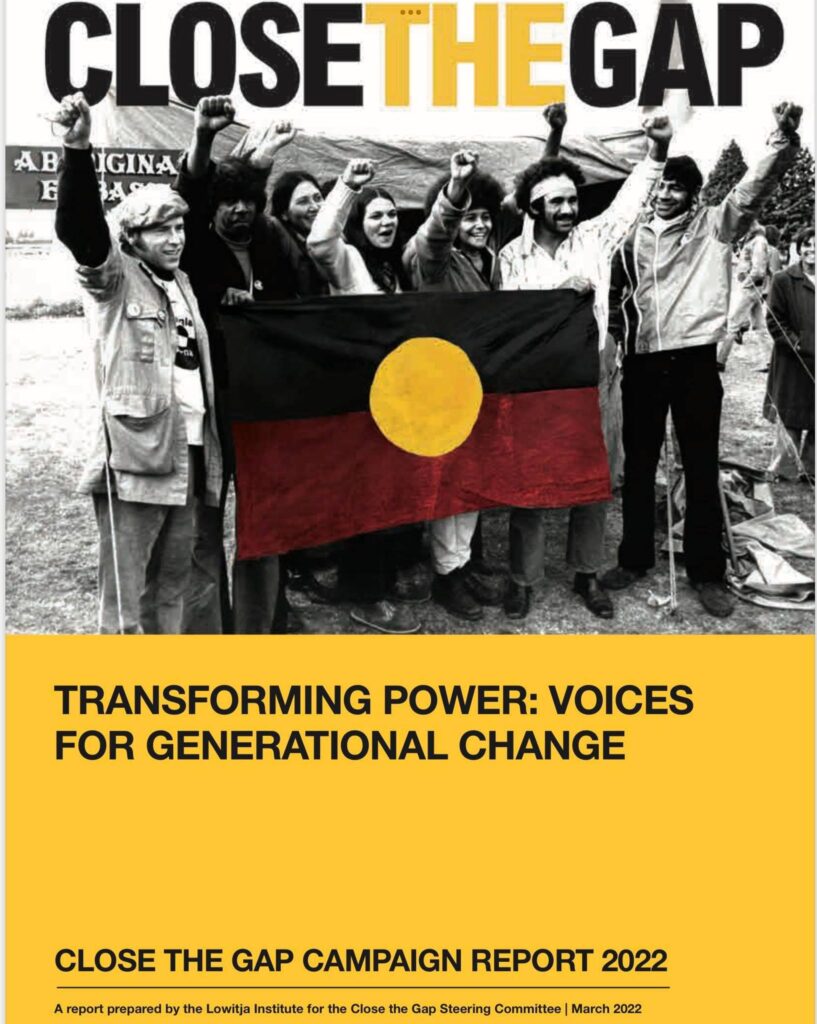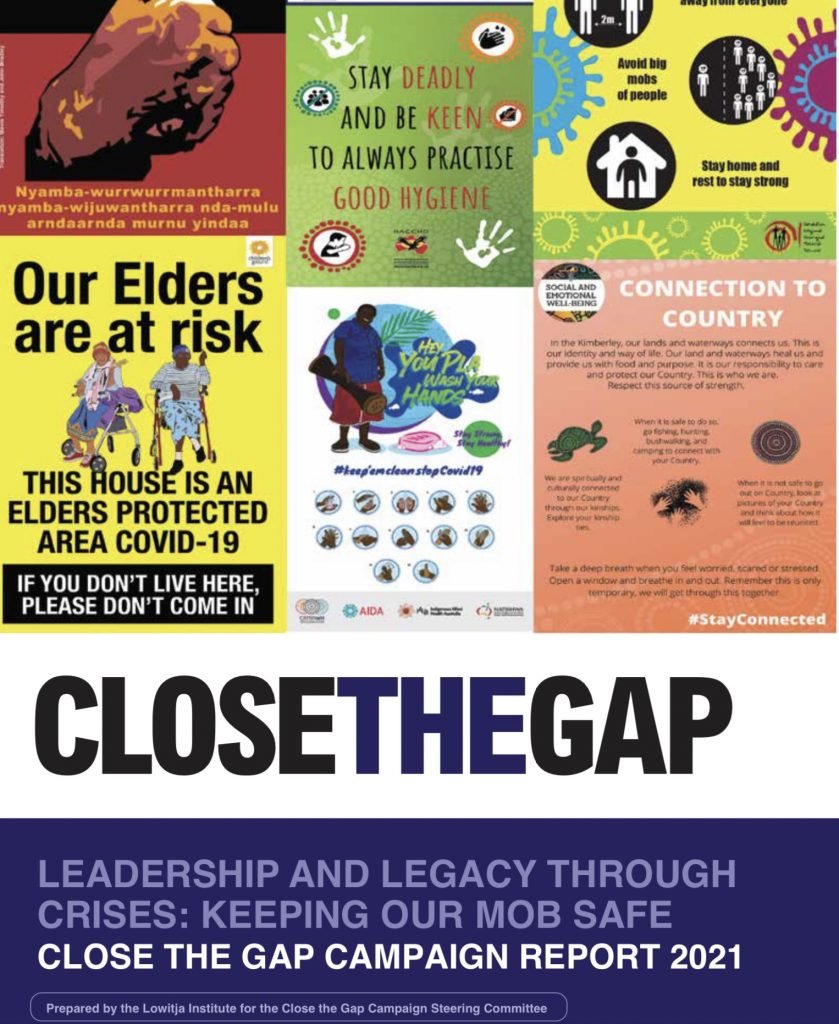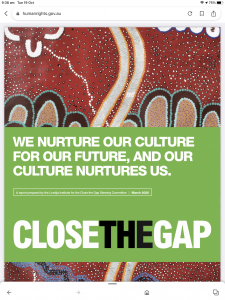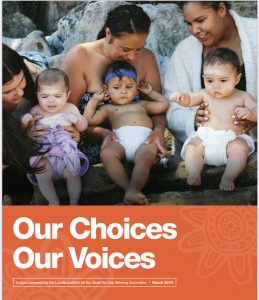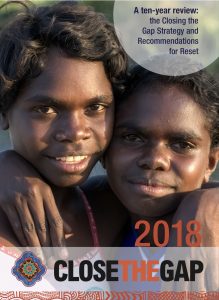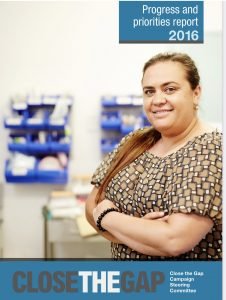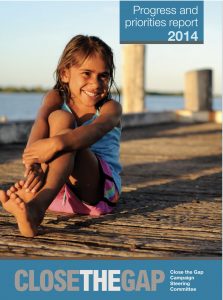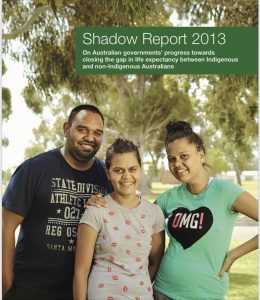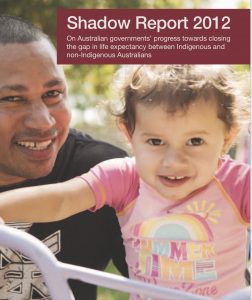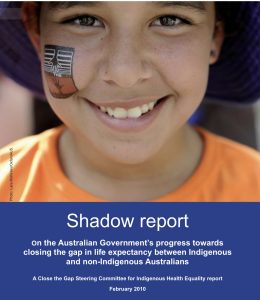CTG Campaign Annual Reports
CTG Annual Reports 2010 to 2025
2025 Close the Gap Full Report
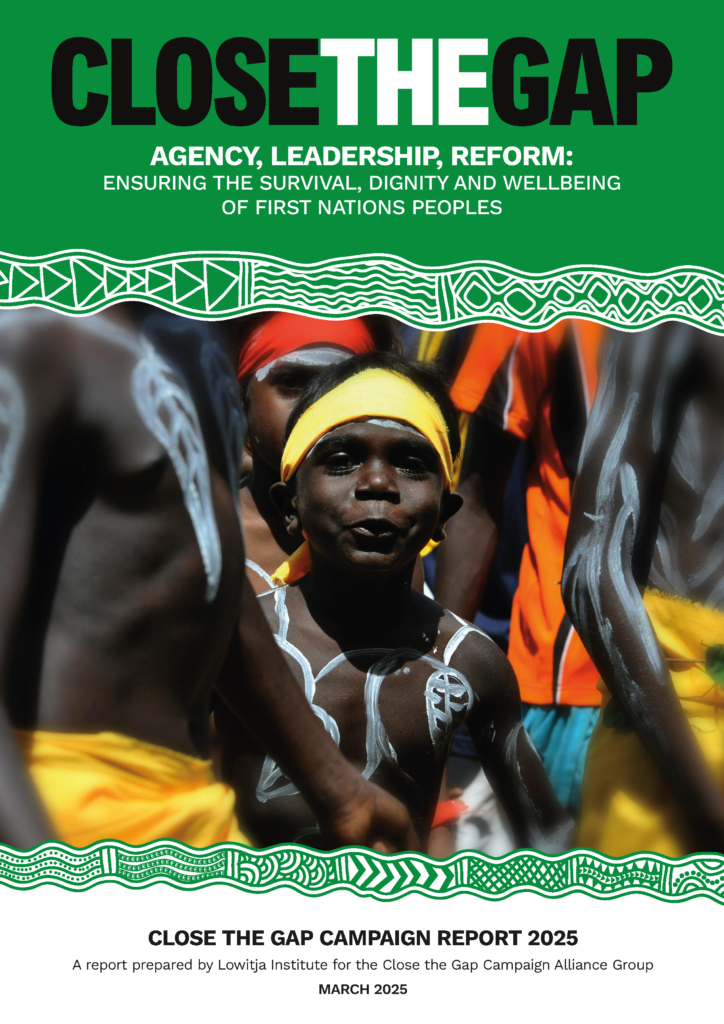
This year’s themes of agency, leadership, and reform underscore the pivotal role Aboriginal and Torres Strait Islander leaders and communities continue to play in embedding the four Priority Reform Areas outlined in the National Agreement on Closing the Gap.
The Close the Gap Campaign has released its annual report, emphasising both the ongoing challenges and the tangible solutions needed to close the health and wellbeing gap for Aboriginal and Torres Strait Islander peoples. The report showcases how the closing the gap priority reform areas are being implemented to create lasting change.
A central focus of this year’s report is the success of First Nations leaders who are actively shaping solutions and paving the way to close the gap. These leaders and their organisations have shown steadfast commitment to advancing the rights and aspirations of Aboriginal and Torres Strait Islander communities-ensuring the survival, dignity and wellbeing of Indigenous Australians.
2024 Close the Gap Full Report
The themes of this year’s report are Progressing Voice, Treaty, and Truth; Leadership and Governance; and Building our Economies.
They are explored through nine case studies, which are exemplars of Blak excellence.
The themes speak to economic, social, political and cultural determinants of health that are crucial to commitments by Australian governments to closing the gap.
Prepared by Lowitja Institute for the Close the Gap Campaign Alliance Group March 2024.
2023 Close the Gap High Level Summary Report
2023 Close the Gap Full Report
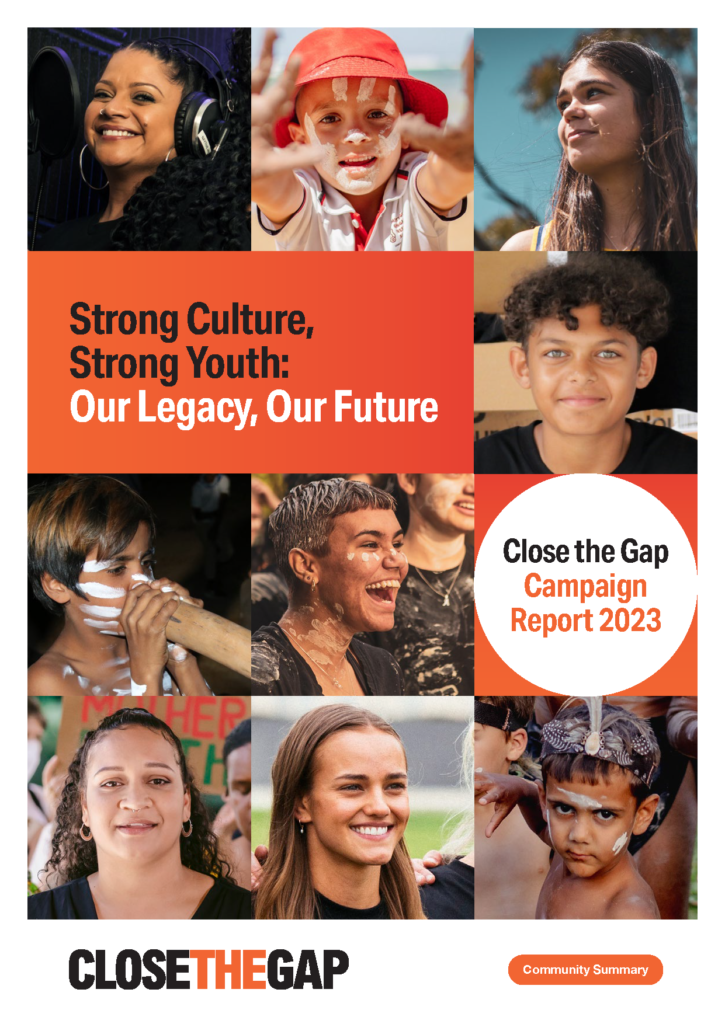
2022 Close the Gap Report
This year’s report, Transforming Power – Voices for Generational Change, is a small collection of
the hundreds of stories that catalogue the success of Aboriginal and Torres Strait Islander-led initiatives.
We know that to improve the outcomes for Aboriginal and Torres Strait Islander peoples,
large-scale systemic reform and a paradigm shift in policy design and delivery is necessary
to truly empower Aboriginal and Torres Strait Islander peoples.
2021 Close the Gap Report
On behalf of the Close the Gap Campaign’s 54 members, we invite you to engage with our 12th annual report titled, Leadership and Legacy Through Crises: Keeping our Mob safe. This year’s report was produced by the Lowitja Institute, Australia’s community controlled national institute for Aboriginal and Torres Strait Islander health research. In our annual reports we often repeat our recommendations, and we remain steadfast and persistent in the expectation that Aboriginal and Torres Strait Islander ways of knowing, being and doing will be respected and understood.
With this report — We nurture our culture for our future, and our culture nurtures us — we have sought to reflect the reciprocal and cyclical relationship between culture and wellbeing, whereby nurturing culture keeps us, and our future generations, healthy and strong.
It is of great concern to us, the Close the Gap Campaign—as indeed it should be to the Australian nation—that the target to close the gap in life expectancy between Aboriginal and Torres Strait Islander people and non-Indigenous people by 2031 is, in 2019, widening rather than closing. In his Closing the Gap Report 2019 to Parliament, the Prime Minister acknowledged that this target is not on track.
This review assesses the most significant national effort to date to improve Aboriginal and Torres Strait Islander health: the 2008 Council of Australian Governments’ (COAG) Closing the Gap Strategy with its target to achieve life expectancy (health) equality by 2030. Ten-years after its commencement, it is time to critically reflect on why Australian governments have not yet succeeded in closing the health gap to date, and why they will not succeed by 2030 if the current course continues. In fact, a December 2017 Australian Institute of Health and Welfare report found the mortality and life expectancy gaps are actually widening due to accelerating non-Indigenous population gains in these areas.
After 10 years, and despite closing the gap being a national bipartisan priority, it is clear that Australian governments at all levels are, in key respects, failing Australia’s First Peoples.
In February 2016, the Close the Gap Campaign (the Campaign) welcomed the Prime Minister’s words at his first Closing the Gap report to Parliament where he said ‘we have to stay the course on key policy priorities’ and that it is time for governments to ‘do things with Aboriginal people, not do things to’ Aboriginal people. In his speech, the Prime Minister said:
“I will honour that commitment not by delivering to Indigenous Australians, but by working with Aboriginal and Torres Strait Islander leaders and their communities across Australia…”
And yet, as shown by the recent report of the Australian National Audit Office regarding the Indigenous Advancement Strategy, across nearly every government funded program, initiative or portfolio responsibility we see the continuation of imposed, unengaged and often rushed service delivery.
In his 2005 Social Justice Report, then Aboriginal and Torres Strait Islander Social Justice Commissioner Professor Tom Calma AO described the unacceptably wide health and life expectancy gap between Aboriginal and Torres Strait Islander peoples and non-Indigenous people in Australia and observed: ‘It is not credible to suggest that one of the wealthiest nations in the world cannot solve a health crisis affecting less than 3% of its citizens.’
This report is a collaborative effort of the Close the Gap Campaign Steering Committee. Funding for, and project management of, the report was provided by Oxfam Australia.
This report is a collaborative effort of the Close the Gap Campaign Steering Committee. Funding for, and project management of, the report was provided by Oxfam Australia.
This shadow report is a collaborative effort of the Close the Gap Campaign Steering Committee. Funding for, and project management of the report was provided by Oxfam Australia.
This shadow report is a collaborative effort of the Close the Gap Campaign Steering Committee. Funding for, and project management of the report was provided by Oxfam Australia.
This shadow report is a collaborative effort of the Close the Gap Steering Committee for Indigenous Health Equality.
Special acknowledgement is owed to NSW Aboriginal Health and Medical Research Council, Aboriginal Medical
Service Alliance Northern Territory, Drug Health Services Royal Prince Alfred Hospital, National Drug Research
Institute, Sunrise Health Service, Healthabitat, Many Rivers Alliance, Medical Deans for Australia and New Zealand,
Queensland Aboriginal and Islander Health Council, Queensland Alcohol and Drug Research and Education Centre,
the Inala Indigenous Health Service, Victorian Aboriginal Community Controlled Health Organisation and the Victorian
Aboriginal Health Service for their contributions to this research. Funding for, and project management of the report was provided by Oxfam Australia.

We invite members of the public, schools and organisations to support the Close the gap campaign and or donate.

